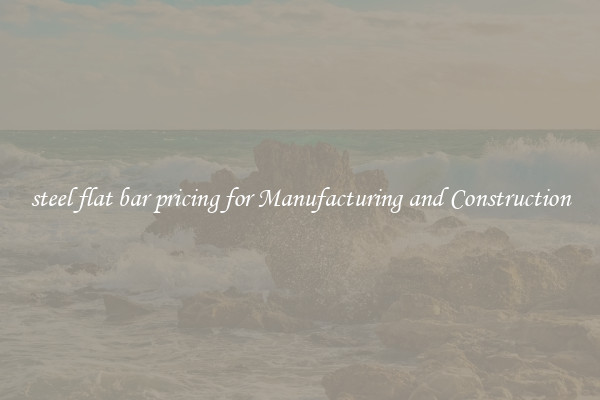steel flat bar pricing for Manufacturing and Construction
Steel flat bars are a staple in the manufacturing and construction industry, used for various applications ranging from fencing to structural support. Their versatility, durability, and affordability make them a popular choice for builders and manufacturers alike. However, one crucial element that needs consideration before undertaking any project involving steel flat bars is pricing.

The pricing of steel flat bars can vary depending on several factors such as market demand, raw material costs, and manufacturing processes. This article aims to shed light on the various aspects that influence steel flat bar pricing for manufacturing and construction purposes.
One of the primary factors affecting steel flat bar pricing is the cost of raw materials. Steel is made from iron ore, which is then processed into steel through various manufacturing processes. Fluctuations in the price of iron ore can directly impact the price of steel flat bars. Furthermore, other alloys such as carbon, manganese, and chromium may be added to steel to enhance its physical properties, which can further escalate the cost.
Another crucial factor that affects pricing is market demand. Economic conditions, construction trends, and manufacturing requirements all contribute to the level of demand for steel flat bars. During periods of high demand, such as rapid infrastructure development or a construction boom, the price of steel flat bars may tend to increase. Conversely, during periods of low demand or economic downturns, the price may decrease as manufacturers look to incentivize sales.
Manufacturing processes also play a significant role in determining the pricing of steel flat bars. Different manufacturing methods, such as hot rolling, cold rolling, or extrusion, have varying costs associated with them. Hot rolling, for instance, involves passing the steel through a series of rollers while it is heated, resulting in a lower-cost production method compared to cold rolling, which is performed at room temperature.
Transportation and logistical costs also factor into the final price of steel flat bars. Depending on the location of the manufacturing facility and the proximity to the destination market, prices may vary. Additionally, the costs of handling, packaging, and storage can add to the overall pricing.
Lastly, supply chain dynamics and competition within the industry can influence steel flat bar pricing. Manufacturers with a strong network of suppliers and streamlined processes can often offer more competitive prices compared to smaller operations. Similarly, competition between manufacturers can drive prices down as companies vie for market share.
In conclusion, steel flat bar pricing for manufacturing and construction purposes is influenced by several factors. The cost of raw materials, market demand, manufacturing processes, transportation costs, and supply chain dynamics all contribute to the final price. Understanding these factors is vital for buyers and suppliers to make informed decisions when it comes to steel flat bars, ensuring optimal value for their projects.

View details

View details

View details

View details








